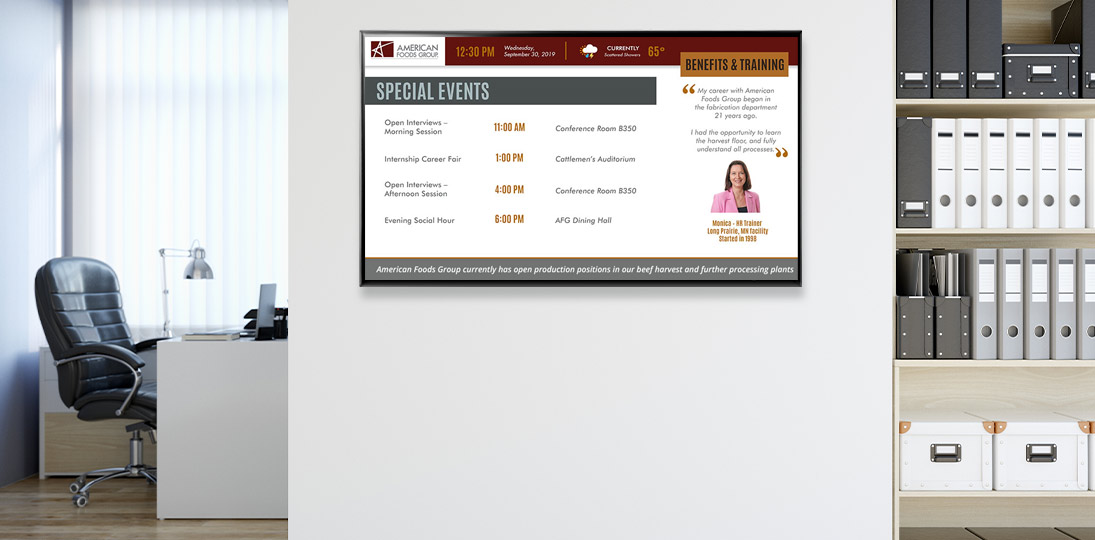If we told you there was a single product your business could buy that would save money, improve efficiencies, increase employee engagement, raise customer satisfaction and boost the bottom line, you’d buy it, wouldn’t you?
The time of digital signage has arrived, and organizations without it are going to get left behind. We’re well into the 21st century, and both your employees and customers expect modern communications from your organization. If you’re not using digital signs for your business, it’s time to seriously think about it.
Here are 16 concrete reasons for transitioning to electronic signs for business:
Digital Signs Boost the Bottom Line
1. Digital signs are bright, modern and dynamic. People are used to referencing screens on the go to get information, whether it’s phones, tablets or electronic posters. They’re also used to seeing digital signs in retail spaces, so digital signage for business is a small leap for them.
2. By replacing print communications, you can reduce ongoing costs for things like paper and ink, not to mention being more eco-friendly by saving all of those materials and waste.
3. You’ll save your staff time, which means more productive employees and money for your organization. Visual messages don’t require graphic designers since most use templates. They can be scheduled quickly, then retire automatically.
4. You can show unified communications across your building, campus or in offices across the globe – all managed from a central content management system. You can allow one person, a team or multiple groups to contribute and manage your messages.
5. You can target what content gets delivered where, right down to the individual screen, or an area of a screen if you’re using a multi-zone layout.
6. Any good digital sign software will let you integrate event calendars, dashboards, news, weather and social feeds to keep your audience constantly informed and up to date. And they’re all automated, so you just have to set them up and let them run.
7. Keep everyone safe in an emergency by adding digital signs to your alert notification plan. CAP notices can automatically trigger alerts on screens with updates and instructions.
Electronic Signs Increase Employee Engagement
8. Digital signs greatly increase employee engagement, especially for today’s workforce. Engaged workers are happier and more productive, stay on the job longer and contribute more to the organization.
9. You can show real-time metrics and progress toward goals to affect performance and motivate your people to do their very best.
10. Kudos and recognition on screens make people feel included, and let them know that management sees them and appreciates their efforts.
11. No one needs to ever miss an important HR or communications update with well-planned signage for business.
12. Meeting room signage can streamline the booking process for shared spaces, especially when integrated with your your calendaring system.
Interactive Signs Improve the Customer Experience
13. Screens can advertise new products, services, limited time offers and loyalty programs to everyone who comes to your venue.
14. Showing queuing data on digital signs reduces perceived wait times, further adding to people’s satisfaction and improving the visitor experience.
15. Interactive wayfinding, directories and info kiosks in public spaces can reduce the burden on lobby staff, allowing people to find their own way. This lets visitors browse the information they want in their own way, at their own pace, and frees up your workers to provide more personalized service.
16.You can even sell ad space to nearby vendors, integrating your business into the local community and adding more value for visitors, as well as turning your business signage into a profit center.
That’s just the most basic reasons to get digital signs for your business. (There will be a whole host of other advantages specific to your company.) Use this list as a cheat sheet when talking your C-suite and others you need to convince to get the ball rolling. Talk to who you need to talk to, take a look at different digital signage companies, look at the pros and cons of different software platforms, choose one and then get going.
